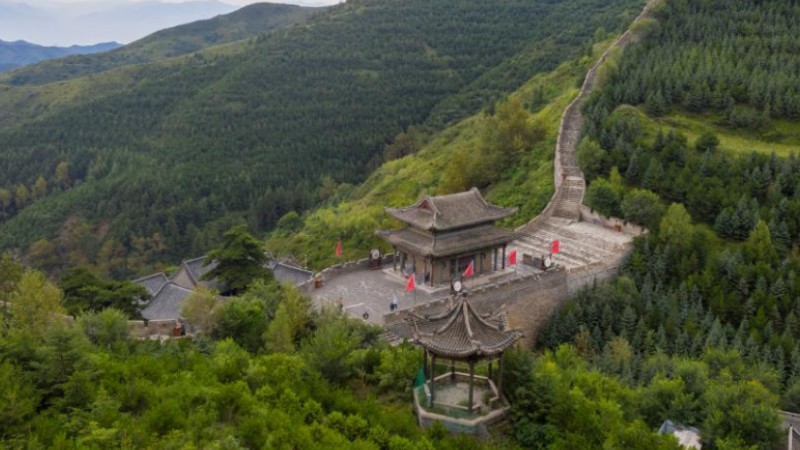Botanical garden in the heart of desert
URUMQI, Sept. 4 (Xinhua) -- For more than two decades, Chang Qing has dedicated her life to cultivating plants in the vast desert of northwest China's Xinjiang Uygur Autonomous Region.
For the senior engineer at the Xinjiang Institute of Ecology and Geography under the Chinese Academy of Sciences and also the designer of the Tazhong botanical garden, there is only a barren desert, not a barren life.
Earlier in August 2003, as part of the efforts to keep the Taklimakan cross-desert highway unaffected by drifting sands and ensure its accessibility, a desert highway ecological protection shelterbelt project was launched. The Tazhong botanical garden, dedicated to nurturing sand-resistant, drought-resistant, and salt-alkali-tolerant plants, was also established alongside this project.
Growing out of nothing, the botanical garden has become a verdant oasis spanning over 300 mu (about 20 hectares), where over 230 vegetation species survive and thrive.
"I love plants, and these plants are like my children," Chang said.
However, cultivating plants in the desert seemed like an insurmountable challenge in this "sea of death."
Chang traveled across deserts and Gobi regions in search of plants adapted to desert life. Each spring, she would plant seeds she collected in the previous year and take care of the seedlings. During the scorching summer, she and her team pruned and watered the plants while collaborating on research projects with students. As the autumn winds and sandstorms subsided, Chang would once again embark on journeys to find desert-adapted plants. Winter, however, becomes a season that brings fresh challenges for Chang, as she has had to contend with increasing mice and wild rabbits in recent years.
"Wild animals have been frequently spotted recently, and even some rare and protected species are frequently seen," Chang said.
"After years of development, the botanical garden has formed a complete ecosystem. Although our beloved plants are often damaged, being able to provide a habitat for so many lives in the heart of the desert is quite meaningful," she added.
Thanks to the relentless efforts of Chang and her colleagues, by 2005, over 20 million plants had formed a "green barrier" that measures over 400 km in length and over 70 meters in width, safeguarding the 522-km highway in the world's second-largest shifting sand desert.
Upon completion of the project, Chang chose to stay, immersing herself in further research on plant cultivation in desert and desertification control.
Today, the Tazhong botanical garden not only provides crucial technical support for numerous desert highway ecological protection projects, but has also extended its experience in desertification control and sand prevention to regions across the country, and even ventured overseas, such as African and Central Asian countries.
Photos
Related Stories
Copyright © 2023 People's Daily Online. All Rights Reserved.









